Among publishers, New Harbinger Publications stands out for its 40 years of focused publishing, for its long list of perennial bestsellers, for its independence, for its success financially, for helping its reader-customers understand problems and improve their lives and, perhaps most important, for publishing books that, as it says, change the world and address human suffering. Consider:
- The house continues to concentrate on publishing evidence-based self-help titles that have steady sales from year to year that help readers and practitioners deal with anxiety, depression, bipolar disorder, borderline personality disorder, OCD, PTSD and other diagnoses.
- New Harbinger continues to be the leading publisher in the field of cognitive behavioral therapy as well as "third wave" behavioral therapy, dialectical behavior therapy, and acceptance and commitment therapy. This has solidified its connections with authors and practitioners and kept it on the cutting edge of new trends.
- The company, which focused initially on mail order sales, then worked with a distributor, now has its own sales team and sells directly to the trade, which has increased revenue, margins and its contact with the market.
- New Harbinger is an ESOP, an employee-owned company, with staff owning 54% of stock, which, among other benefits, maintains the house's independence and improves staff morale and sense of ownership.
- Last year the company's sales rose to more than $15 million, and it had its first New York Times bestseller, The Untethered Soul by Michael Singer.
 |
| Matthew McKay, 1973 |
To understand New Harbinger best, it helps to go back to the company's founding in 1973, which took place, as co-founder and CEO Matthew McKay said, "in a bar, where so many good things begin." At the time, McKay was a graduate psychology student while his good friend and imminent business partner Patrick Fanning worked at Miller-Freeman, the former book and magazine publisher and trade show organizer. Fanning, who retired in 2000 but is still close to the company, worked on industrial reference books, learning as much as he could about publishing and direct mail. Earlier, when they were fresh out of college, the friends had published and sold a mimeographed literary magazine as they traveled around the country.
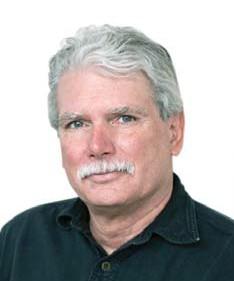 |
| Matthew McKay |
At first, the fledgling company published poetry broadsides and a children's book; its first major publication was a pamphlet called International Postal Handbook, which in the era before the Internet, UPS Global and FedEx, consisted of U.S. postal instructions that were important for anyone shipping abroad. "The Guide was our first publication that made any money, and went through two editions," McKay said. "It gave us a nest egg to do other books."
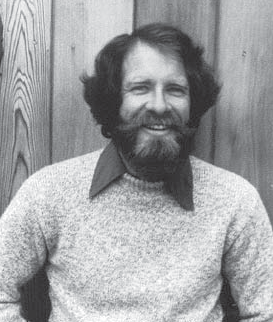 |
| Patrick Fanning, 1973 |
The next book, which came to define New Harbinger, "completely fell into our laps," McKay said. His girlfriend at the time was a psychologist who ran stress workshops at Kaiser Permanente, and wanted to photocopy a pamphlet for patients on dealing with stress. Published in 1980, The Relaxation & Stress Reduction Workbook by Martha Davis, Elizabeth Robbins Eshelman and McKay, is now in its sixth edition and has sold more than a million copies.
The second major book, Thoughts & Feelings: Taking Control of Your Moods and Your Life by McKay, Davis and Fanning--based on a graduate school class McKay had taken on cognitive behavioral technique--became a classic in the field. "Most of our early self-help psychology books came out of Matt's perception of the state of psychology and what people needed," Fanning said.
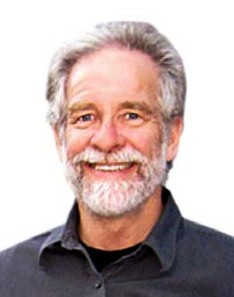 |
| Patrick Fanning |
A key element of the early books that continues today is the do-it-yourself approach, a striking contrast to most of the other titles that existed then in the field, McKay said. These were either inspirational books or books that mostly detailed "horrible problems," without offering strategies or tools for dealing with the problems. McKay and Fanning attributed the DIY approach in part to Fanning's love of building things, which in the early years of New Harbinger included a guitar, a barn raising and a wooden sailboat.
New Harbinger's workbooks have a three-pronged approach: teaching ideas and concepts; simple step-by-step exercises; and providing examples of how others have done the exercises. As McKay put it: "We blended Popular Mechanics with psychology."
Over time, McKay emphasized, Fanning and CFO Kirk Johnson also built "solid strategies for inventory management, evaluating the business, acquiring good data and making empirically based decisions on what to do and not to do."
Another big shift was the hiring of Catherine Myers in 1996 as an acquisitions editor (see more about her below). She expanded the press's reach into third wave behavior therapy, which incorporates Buddhist concepts of mindfulness and distance from thoughts--"because they work," McKay said. "We latched onto that very early," he noted. "We were in front of the curve."
 |
| Julie Bennett |
In 2002, New Harbinger decided to leave PGW, its distributor for 21 years, and have "a direct relationship to buyers," McKay said. The company hired Julie Bennett, now v-p of sales and marketing, whom they knew from PGW days. "Matt called and asked if I would create a sales culture," she said. "They were strong in editorial and had a solid marketing program, so I built a sales team and added it to the mix."
After that move, "our business started to grow rapidly," McKay said, "mostly because Julie knew everyone in the business." Sales rose and margins improved.
Another major milestone for New Harbinger was the creation of an Employee Stock Ownership Plan (ESOP) in 2004, which led to an immediate gain "in productivity and the morale of the employees," Fanning said. Staff now own 54% of New Harbinger, and there is transparency throughout the company, and ideas and suggestions flow easily, McKay said. "People feel more responsible and we retain more staff." He noted that for people who retire, the benefit is "in the hundreds of thousands of dollars." All staff are eligible for the ESOP after a year of employment, and become fully vested after six years. New Harbinger has a staff of 53.
The ESOP also means that New Harbinger will continue in its present form for many years to come, maintaining its values and the founders' vision. As McKay noted, "Typically on the West Coast, entrepreneurs start businesses, and when the time comes for them to retire or cash out, they sell, typically to a large publisher on the East Coast." After that, the company is often folded into the larger company, and most employees are let go.
The company is now expanding in ways unimaginable when it started in 1973. New Harbinger is putting its workbook therapy approach online and moving into event planning and direct training, organizing trainers around the country to teach evidence-based, cutting-edge therapies. It's also publishing Spanish-language versions of its products, as well as audiobooks. In an observation that applies to the company history, too, McKay said, "We continue to look at other products and continue to push outwards."















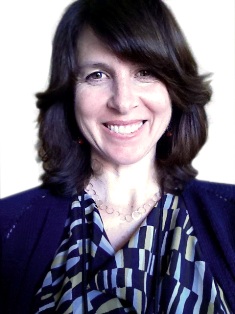
 Far from a one-size-fits-all solution, New Harbinger offers different ways to deal with stress and anxiety and also addresses specific stress factors such as phobias and worrying. The recently published Goodnight Mind by Colleen E. Carney, Ph.D., and Rachel Manber, Ph.D., guides readers on how to tame anxious thoughts and get a good night's sleep. The Mindfulness & Acceptance Workbook for Social Anxiety & Shyness by Jan E. Fleming, M.D., and Nancy L. Kocovski, Ph.D., is part of a series centered on new developments in mindfulness and acceptance methods (learning to work with and evaluate your thoughts rather than try to suppress them).
Far from a one-size-fits-all solution, New Harbinger offers different ways to deal with stress and anxiety and also addresses specific stress factors such as phobias and worrying. The recently published Goodnight Mind by Colleen E. Carney, Ph.D., and Rachel Manber, Ph.D., guides readers on how to tame anxious thoughts and get a good night's sleep. The Mindfulness & Acceptance Workbook for Social Anxiety & Shyness by Jan E. Fleming, M.D., and Nancy L. Kocovski, Ph.D., is part of a series centered on new developments in mindfulness and acceptance methods (learning to work with and evaluate your thoughts rather than try to suppress them). One of New Harbinger's bestselling books has been in print for nearly the entire extent of the company's history. Originally published in 1980, The Relaxation & Stress Reduction Workbook (co-authored by company founder Matthew McKay) has sold close to one million copies and is still going strong. Now in its sixth edition, the book is a go-to source for therapists and others, detailing how to identify your own stress triggers and symptoms and create a personalized plan for reducing stress.
One of New Harbinger's bestselling books has been in print for nearly the entire extent of the company's history. Originally published in 1980, The Relaxation & Stress Reduction Workbook (co-authored by company founder Matthew McKay) has sold close to one million copies and is still going strong. Now in its sixth edition, the book is a go-to source for therapists and others, detailing how to identify your own stress triggers and symptoms and create a personalized plan for reducing stress. Five Good Minutes: 100 Morning Practices to Help You Stay Calm and Focused All Day Long launched the series, co-written by Jeffrey Brantley, M.D., founder of the Mindfulness-Based Stress Reduction Program at Duke Integrative Medicine, followed by Five Good Minutes with the One You Love and other titles.
Five Good Minutes: 100 Morning Practices to Help You Stay Calm and Focused All Day Long launched the series, co-written by Jeffrey Brantley, M.D., founder of the Mindfulness-Based Stress Reduction Program at Duke Integrative Medicine, followed by Five Good Minutes with the One You Love and other titles.
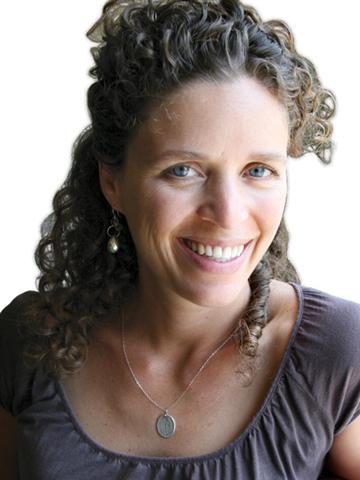
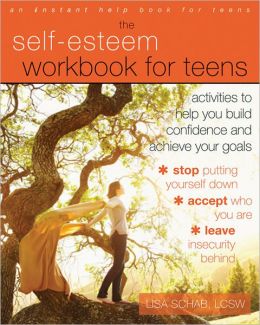 Using a practical, skills-based approach--combined with new developments in behavioral therapy and mindfulness-based methods--sets Instant Help apart in the teen self-help category. Books share advice and treatments based on extensive research, including authors' own real-world work with kids. In addition, content is written in an engaging way that young readers can easily relate to and understand.
Using a practical, skills-based approach--combined with new developments in behavioral therapy and mindfulness-based methods--sets Instant Help apart in the teen self-help category. Books share advice and treatments based on extensive research, including authors' own real-world work with kids. In addition, content is written in an engaging way that young readers can easily relate to and understand. The first title in the new Instant Help Solutions series is Think Confident, Be Confident for Teens: A Cognitive Therapy Guide to Overcoming Self-Doubt and Creating Unshakable Self-Esteem by Marci G. Fox, Ph.D., and Leslie Sokol, Ph.D. Geared toward libraries, the books are still skills-based but are more prose-driven than the workbooks and packaged in a smaller format (6"x8").
The first title in the new Instant Help Solutions series is Think Confident, Be Confident for Teens: A Cognitive Therapy Guide to Overcoming Self-Doubt and Creating Unshakable Self-Esteem by Marci G. Fox, Ph.D., and Leslie Sokol, Ph.D. Geared toward libraries, the books are still skills-based but are more prose-driven than the workbooks and packaged in a smaller format (6"x8"). New Harbinger's bestsellers over the years include:
New Harbinger's bestsellers over the years include: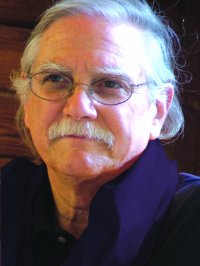 Michael A. Singer is the author of
Michael A. Singer is the author of  Book you're an evangelist for:
Book you're an evangelist for: